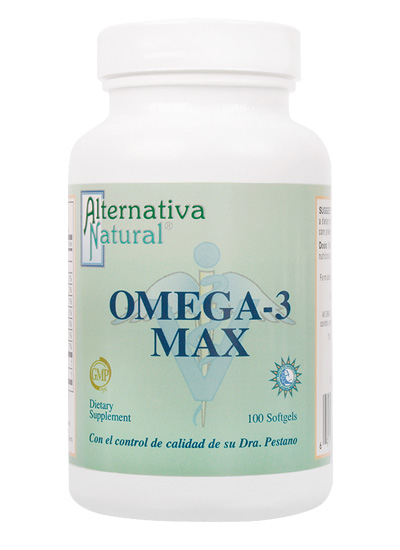

Please call 1-800-721-1310 for more information on how to order!
Omega-3 Max contains two important fatty acids: EPA and DHA. These fatty acids are considered “essential” because the body cannot make them, so EPA and DHA must be obtained from the diet. EPA and DHA play important roles in various biological processes. The fatty acids help support a healthy immune system, promote healthy skin and haircoat, and optimize heart, joint, and brain function.
Omega-3 Max is formulated with eicosapentaenoic (EPA) and docosahexaenoic (DHA) acids. These essential fatty acids have many important biological functions that include supporting the body’s natural immune response, optimizing cardiovascular function and maintaining normal lipid metabolism, and promoting healthy mobility, vision, and skin and haircoat.1-4 EPA and DHA also support cognitive function by maintaining cellular health and communication within the nervous system.5,6
References
1Ahlstrom RT, Wolf T, Peterson D, et al. Alternative treatment options for managing hepatic lipidosis in an Atlantic Ridley sea turtle (Lepidocheyls kempii). Proceedings of the International Association for Aquatic Animal Medicine. 2012.
2Fritsch DA, Allen TA, Dodd CE, et al. A multicenter study of the effect of dietary supplementation with fish oil omega-3 fatty acids on carprofen dosage in dogs with osteoarthritis. J Amer Vet Med Assoc. 2010; 236(5): 535-9.
3Mueller RS, Fieseler KV, Fettman MJ, et al. Effect of omega-3 fatty acids on canine atopic dermatitis. J Small Anim Pract. 2004; 45: 293-7.
4Corbee RJ, Barnier MMC, van de Lest CHA, et al. The effect of dietary long-chain omega-3 fatty acid supplementation on owner’s perception of behavior and locomotion in cats with naturally occurring osteoarthritis. J Anim Phys Anim Nutr. 2013; 97(5): 846-853.
5Smith CE, Freeman LM, Rush JE, et al. Omega-3 fatty acids in boxer dogs with arrhythmogenic right ventricular cardiomyopathy. J Vet Intern Med. 2007; 21: 265-273.
6Scorza FA, Cavalheiro EA, Arida RM, et al. Positive impact of omega-3 fatty acid supplementation in a dog with drug-resistant epilepsy: A case study. Epilepsy & Behavior. 2009; 15: 527-8.
| Weight (lbs.) | Daily Use |
| Less than 50 | 1 Capsule |
| 50 - 100 | 1 Capsule AM and 1 Capsule PM |
| 101 - 300 | 1 Capsule AM and 2 Capsules PM |
| 301 - 500 | 2 Capsules AM and 2 Capsules PM |
| 501+ | Contact Us for Dosage Guidelines |
| Active Ingredients | Amount Per Serving |
| Calories | 22 mg |
| Calories from Fat | 18 mg |
| Total Fat | 2 g |
| Saturated Fat | 0.4 g |
| Cholesterol | 2 mg |
| Total Carbohydrates | 0.22 mg |
| Sodium | 0 mg |
| Protein | 0.5 mg |
| Vitamin E (as d-alpha tocopherol) | 2 IU |
| Eicosapentaenoic Acid (EPA) | 360 mg |
| Docosahexaenoic Acid (DHA) | 240 mg |
| Inactive Ingredients: Fish oil concentrate, gelatin, glycerin, water. | |